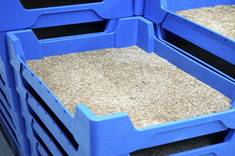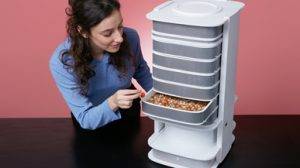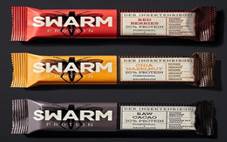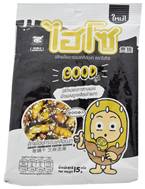Introduction
Entomophagy, the practice of eating insects by humans, is common among many ethnic groups all over the world. However, there has been a growing association of insect eating with sustainability following a recent FAO report claiming that eating insects leads to increasing food security and economic sustainability. The amount of greenhouse gases such as carbon dioxide produced by insects is far less when compared to conventional livestock. The total energy consumption needed to cultivate insects is far less than the amount of energy needed to rear poultry or cattle.
Nutritional value
There are thousands of known species of edible insects that are considered as sustainable and alternative sources of proteins. The nutritional content in insects is supposed to be on par with other meat sources, for example, the African palm weevil larvae has a very high calcium and potassium content while Bombyx mori (silkworm larvae) is known to have a high protein content per unit dry mass. Insects are known to have higher level of iron, calcium and potassium content when compared to other sources of meat or plant-based food products. Insects are also rich in micro-nutrients such as zinc, selenium, phosphorous, copper, etc. Their nutritional value may vary depending on the stage of life, habitat and diet of the insect. As they are therapeutic in nature, they can be an affordable alternative to combat malnutrition. Some species of edible insects popular in the market are beetles, caterpillars, bees, wasps, ants, grasshoppers, locusts, termites and crickets. For consumption, they can be fried, boiled or roasted. Insect based ingredients have been incorporated in foods such as, flours, snacks, energy bars, pastas, etc., as insect eating becomes popular among the general population, entrepreneurs and businesses are finding newer and interesting ways of introducing insect based food products in the market. The Grubbs restaurant which is an all insect food restaurant in the UK, aims to make insect eating a norm by introducing new insects, innovative menus, and spreading information about the nutritional values and environmental benefits of insect eating possesses.
Campaigns via media such as dedicated podcasts, and magazines such as Ento Nation have been instrumental in advocating the benefits of eating insects. The Gateway Bug, an award-winning documentary shot by the NY-based film maker Johanna B. Kelly, discusses at length about the viability of insect based foods as an alternate source of nutrition.
While insect foods are generally considered as safe, nutritious and healthy, there may be potential risks of allergies, digestive disorders and gastrointestinal diseases. Some prevalent allergens known to trigger human allergic reactions are tropomyosin, arginine kinase, haemocyanin, etc.. For example, chitin which is found in the exoskeleton of insects is said to reduce the digestibility of proteins.
The risk of pathogens, parasites, and toxins from bio waste feed must be investigated more thoroughly. A study by the University of California claims that crickets produce a high protein conversion rate only when fed grains and not bio-waste. This creates a conflict over the sustainability of insects as food products. Therefore, there is a need for further research on how feed quality impacts the food quality.

 insects that the farmers breed. One such solution developed by Beekenkamp Verpakkingen is the “insect breeding box”. The box is made of food safe polypropylene and is dimensionally stable, easier to clean, and has reduced edges to prevent the pupae of mealworms from getting stuck to the system. Also, the blue color of the box has been chosen keeping in mind any vision technologies that could be incorporated in the future to make the process of breeding more tech savvy.
insects that the farmers breed. One such solution developed by Beekenkamp Verpakkingen is the “insect breeding box”. The box is made of food safe polypropylene and is dimensionally stable, easier to clean, and has reduced edges to prevent the pupae of mealworms from getting stuck to the system. Also, the blue color of the box has been chosen keeping in mind any vision technologies that could be incorporated in the future to make the process of breeding more tech savvy. The tablet-top insect farm called the Livin farms Hive, a portable insect farm invented by Katharina Unger and Julia Kaisenger, helps grow mealworms in kitchen using food scraps.
The tablet-top insect farm called the Livin farms Hive, a portable insect farm invented by Katharina Unger and Julia Kaisenger, helps grow mealworms in kitchen using food scraps.
 Eat Grub, a London-based company headquartered in London, is well known for its products such as crunchy roasted crickets with mixed flavors, eat grub bars, cricket protein powder, etc.
Eat Grub, a London-based company headquartered in London, is well known for its products such as crunchy roasted crickets with mixed flavors, eat grub bars, cricket protein powder, etc. Pet owners too are increasingly considering edible insects as a source of nutrition for their pets. The black soldier fly larvae and the cricket seem to be the best selling and most liked by pets. UK-based start-up company, Yora Pet foods makes dry food products for dogs from black soldier fly larvae. Bug Bakes, Eat small, Entoma and BauChef are a few other start-ups in this area.
Pet owners too are increasingly considering edible insects as a source of nutrition for their pets. The black soldier fly larvae and the cricket seem to be the best selling and most liked by pets. UK-based start-up company, Yora Pet foods makes dry food products for dogs from black soldier fly larvae. Bug Bakes, Eat small, Entoma and BauChef are a few other start-ups in this area. Company: Migros-Genossenschafts-Bund
Company: Migros-Genossenschafts-Bund Company: Bugfoundation
Company: Bugfoundation Company: Money food
Company: Money food Company: SWARM Nutrition
Company: SWARM Nutrition Company: Smile Bull Marketing
Company: Smile Bull Marketing